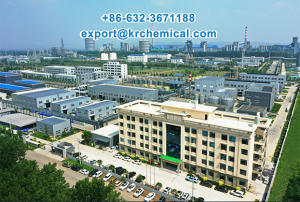Yes, ATMP (Aminotris(methylenephosphonic acid)) can be used in textile printing and dyeing auxiliaries, although its primary applications are often in water treatment, scale inhibition, and corrosion control. However, due to its unique properties, it can offer significant benefits when incorporated into textile processing, especially in formulations where water quality control, scale prevention, and dye fixation are important. Here’s how ATMP can be utilized in the textile industry:
1. Water Treatment in Dyeing and Printing
- Role: ATMP is a powerful chelating agent and scale inhibitor. In textile dyeing and printing, water quality is crucial for achieving consistent, high-quality results. Hard water can interfere with dye uptake, cause scale deposits on equipment, and reduce the effectiveness of some dyes or chemicals.
- Benefit: By binding to metal ions like calcium, magnesium, and iron, ATMP prevents the formation of scale and maintains optimal water quality. This is particularly useful in regions where hard water is a concern.
- Example: Used in dyeing or printing processes where high-quality water (with controlled hardness) is required to achieve consistent dyeing, printing, and finishing results.
2. Improving Dye Uptake and Uniformity
- Role: ATMP, being a chelating agent, helps in improving dye uptake by reducing the concentration of divalent metal ions that may otherwise interfere with the dye-fiber interactions, especially in the case of reactive dyes.
- Benefit: Better dye uptake and more even dyeing results, leading to uniform color across the fabric.
- Example: In the dyeing of cotton and other cellulose-based fibers, ATMP can help enhance the fixation of reactive dyes, ensuring that the dye bonds more effectively to the fiber.
3. Antiscalant and Anti-Deposition Agent
- Role: In textile dyeing and printing, scaling can occur in equipment like dyeing machines, printers, and finishing lines. ATMP is an excellent antiscalant, helping to prevent the formation of insoluble salts from calcium and magnesium, which can otherwise deposit on equipment surfaces.
- Benefit: By preventing scaling, ATMP improves the efficiency of the equipment, reduces maintenance costs, and ensures more consistent processing conditions. It also contributes to cleaner dyeing/printing runs and better product quality.
- Example: Used in textile dyeing machines or printing presses to prevent the buildup of calcium and magnesium salts on machinery, which can cause uneven dye application or clogging.
4. Chelating Agent for Improved Dyeing Efficiency
- Role: In some textile dyeing processes, especially those involving metal-based mordants or ionic dyes, ATMP can function as a chelating agent to prevent the interaction of metal ions with the dye molecules. This helps in improving the color fastness and efficiency of the dyeing process.
- Benefit: By chelating metal ions (like iron or copper) that could interfere with dye bonding or cause color changes, ATMP ensures that the dyes are more stable and perform better during and after the dyeing process.
- Example: Used in reactive dyeing processes where iron or other metal ions can otherwise cause the dye to form undesirable complexes or affect the final color.
5. Control of pH and Stabilization of Dyeing Liquor
- Role: ATMP can also help in stabilizing the pH of the dyeing liquor and controlling the interaction between dyes and fibers. This stabilizing effect is important in dyeing processes that require a controlled pH to achieve optimal results.
- Benefit: Helps ensure consistent dyeing performance by maintaining optimal pH conditions, which can prevent issues like uneven dye uptake or poor dye fixation.
- Example: Used in processes like acid dyeing or disperse dyeing, where the pH of the dye bath needs to be carefully controlled.
6. Enhancement of Fabric Durability
- Role: In some finishing applications, ATMP can contribute to the enhancement of fabric durability by preventing the degradation of fabric fibers that could be caused by metal ions or water hardness.
- Benefit: Increases the longevity and wear resistance of dyed and printed fabrics, especially when subjected to repeated washing and exposure to various chemicals.
- Example: Applied in finishing treatments for textiles to ensure better resistance to wear, washability, and fading over time.
Advantages of Using ATMP in Textile Printing and Dyeing:
- Scale Prevention: ATMP is highly effective at preventing scale formation in hard water, which is a common problem in textile processing. This can help maintain the efficiency of dyeing and printing equipment.
- Improved Dyeing Performance: As a chelating agent, ATMP can improve the uptake and uniformity of dyeing processes by preventing interference from metal ions.
- Cleaner Processes: By preventing the formation of insoluble salts, ATMP ensures cleaner, more efficient dyeing and printing, reducing the risk of equipment fouling and improving the quality of the finished textile products.
- Versatility: ATMP can be used in various dyeing and printing processes, especially those involving reactive, acid, or disperse dyes, where metal ion interference could otherwise lead to poor results.
Considerations:
- Concentration: ATMP is typically used in low concentrations, and its dosage should be carefully controlled to avoid potential issues with over-chelating metal ions or affecting the pH balance.
- Compatibility: While ATMP is generally compatible with most dyeing auxiliaries, it should be tested for compatibility with other chemicals in the system (e.g., surfactants, acid-based products) to avoid any adverse reactions or precipitation.
- Environmental Impact: As with any chemical, consideration should be given to the environmental impact of ATMP, particularly its use in large quantities in wastewater. It is important to ensure proper waste treatment to prevent any negative environmental effects.
Conclusion:
ATMP can certainly be used in textile printing and dyeing auxiliaries, especially in applications where water quality control, scale prevention, and efficient dye fixation are important. Its role as a chelating agent and scale inhibitor can help improve the performance of textile processing, enhance dye uptake, and ensure more consistent results. It is particularly beneficial in hard water conditions and can be used to improve both the quality of dyed/printed fabrics and the efficiency of processing equipment.

